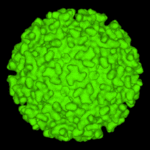 The United States Army Medical Research Acquisition Activity (USAMRAA) is soliciting on behalf of the United States Medical Research Institute of Infectious Disease (USAMRIID) information from potential qualified businesses to support research on alphavirus countermeasures.
The United States Army Medical Research Acquisition Activity (USAMRAA) is soliciting on behalf of the United States Medical Research Institute of Infectious Disease (USAMRIID) information from potential qualified businesses to support research on alphavirus countermeasures.
Currently no FDA approved medical countermeasures exist to treat alphavirus infection and the development of potential therapeutics remains a high priority for the military. USAMRIID and biopharmaceutical company Zalicus are currently funded to screen a library of FDA approved compounds for their effectiveness against encephalitic and viral hemorrhagic fever viruses. They have identified several promising candidates that warrant further characterization. However, the specific mechanism of action and in vivo effectiveness is unknown.
Additional studies are needed as the initial steps for necessary preclinical evaluation that will lead to advanced development efforts. The current solicitation seeks to further characterize and determine the mechanism of action of lead FDA approved compounds found to be effective during initial in vitro alphavirus screening efforts. Required activities include the following:
1: Characterize the potency and effectiveness of the candidate compounds in vitro and in vivo.
1.1: Confirm the antivirus activity of the lead compounds (5-10 candidates) against VEEV by a yield reduction assay.
1.2: Select compounds to be assessed in vivo in mice (compounds with >1 logio PFU/mL reduction in virus compared to no compound control).
1.3: Assess the effectiveness of the lead compounds in mice using a virus construct that expresses luciferase to directly measure the effectiveness of the compounds using an in vivo imaging system.
1.4: Identification of lead compounds with in vitro and in vivo efficacy (deliverable 1, milestone 1).
2: Determine the mechanism of action of lead compounds identified in the above tasks.
2.1: Complete a virucidal assay for lead compounds to determine if they possess virus-inactivating activity.
2.2: Complete a pretreatment assay for lead compounds to determine their effect on host cells.
2.3: Complete attachment and penetration assays for lead compounds to investigate if the compounds interfere with the early stages of viral infection.
2.4: Complete time of addition and removal assays for lead compounds to provide insight about the compounds effect on the various stages of virus replication.
2.5: Complete a virus release assay for lead compounds to determine their ability to interfere with virus release.
2.6: Complete additional assays as needed depending on the results of the above assays (i.e. determining the effects of the lead compounds on viral gene expression protein synthesis, anti-ATPase assay).
2.7: Provide the proposed mechanism of action of lead compounds.
Interested parties must submit capability statements before July 8, 2013. Further details are available under Solicitation Number: W81XWH-13-T-0243.

